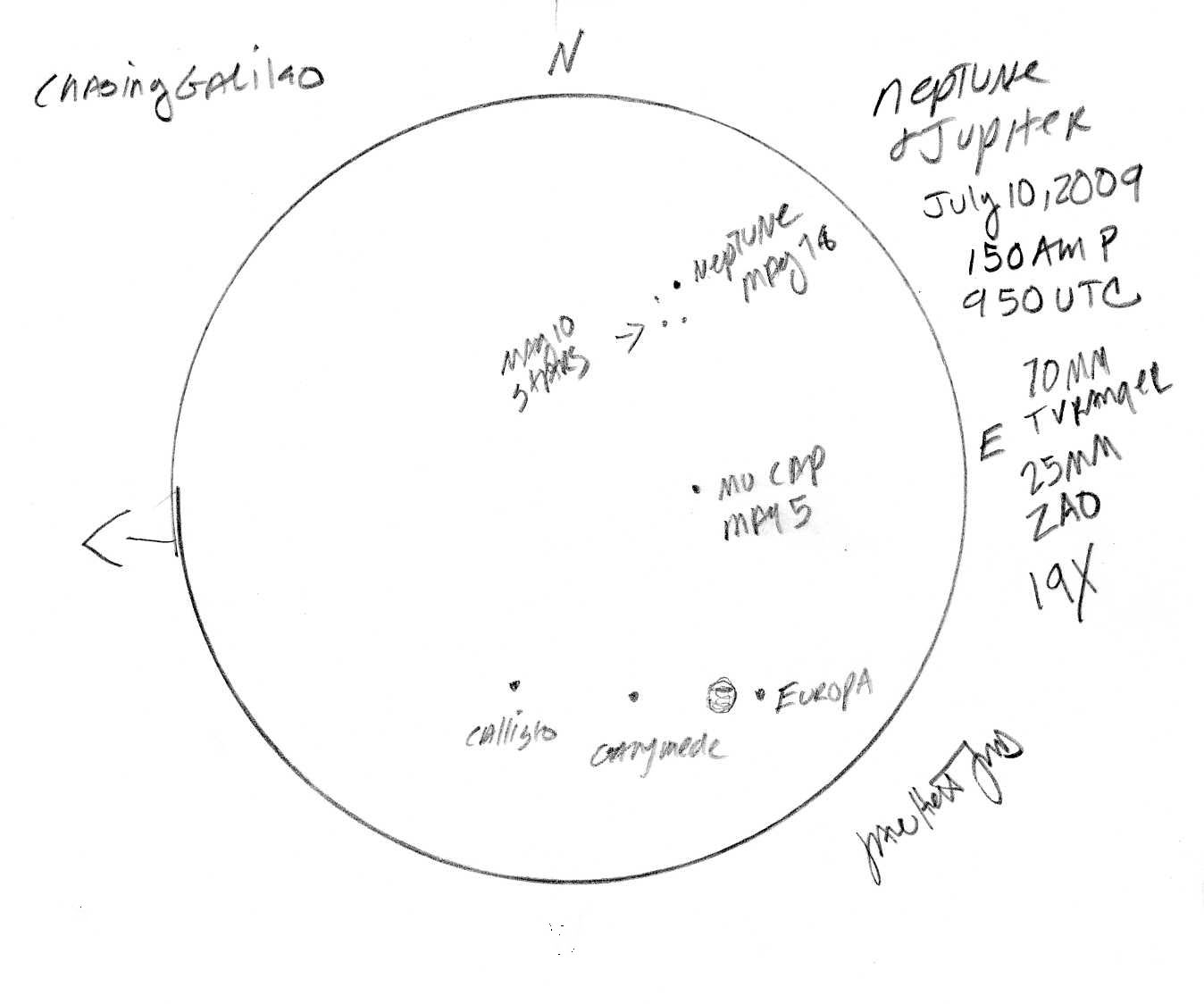Galileo made the first recorded observation of Neptune in 1612 when Neptune appeared to be close to Jupiter from his viewpoint on Earth. The”fixed star” Galileo noted to left of Jupiter (the left most star) on his December 28, 1612 sketch was actually Neptune! The two planets appear close to each other several times this year.
This year, both planets come to opposition in August and for several months on either side of opposition, the two planets appear to temporarily move backwards against the background stars. This is called retrograde motion, and they pass near each other three times this year. On May 26, the planets were only 23′ (or 23 arc minutes) apart. On July 9th, near when I made my sketch, the two planets appeared 33.5′ apart. And on December 21, the Winter Solstice, you can look for Neptune below Jupiter, 32′ distant. This is a great time to easily see both planets in the same low power field of view through a telescope! At higher magnification, they won’t be in the same telescopic field of view, but you’ll find Neptune with just a small nudge or “go-to” to the North.
Galileo observed Neptune in December 28, 1612 and again one month later on January 27, 1613. Then, on the next night, he noted that the two stars seemed further apart. If he had observed the two objects again on the next few nights he would have realized that one of the “stars” was moving.
If you have a chance to look at Jupiter in July 2009, you’ll easily spot Neptune if you know where to look. Here is a star chart for July 25th showing the location of both planets low in the southeast at 11:30 p.m. They are rising, and will be higher in the sky later on. And here is a closeup star chart showing the tip of Capricornus. Use this chart to locate Jupiter in your eyepiece, and then you can easily follow the stars to Neptune. These star charts are made by Sky Map Software.
Neptune’s color in the telescope view is striking! It stands out as a bluish star to the north of Jupiter – about twice the distance north as the width of Jupiter and moons. After I sketched the pair of planets, I revved up the charting software, Sky Map Pro, and entered December 28, 1612. I was amazed to see the planets and moons layed out nearly as Galileo observed them. This may sound silly to you, but that 400 year-old view of the planetary lineup on 21st century software just took my breath away!



[...] Houston Jones, Chasing Galileo: Jupiter and Neptune in the same field of view, [...]